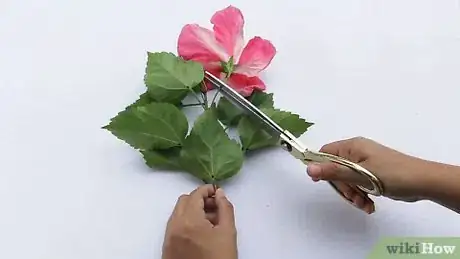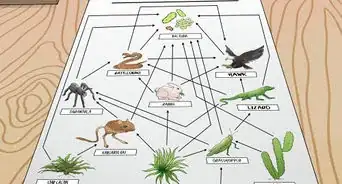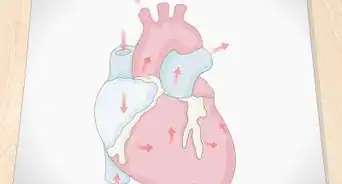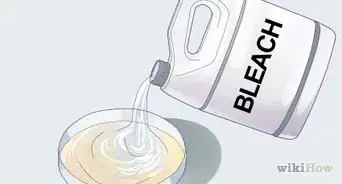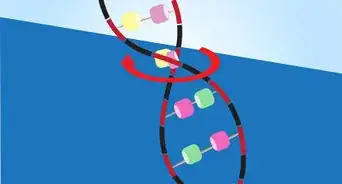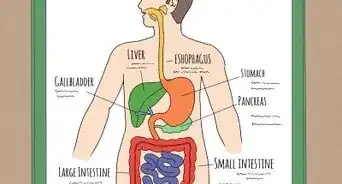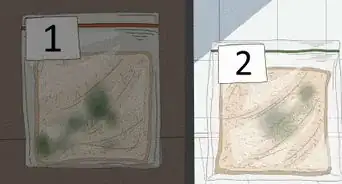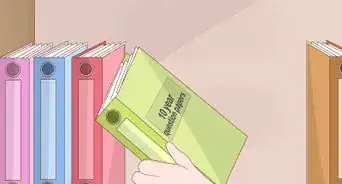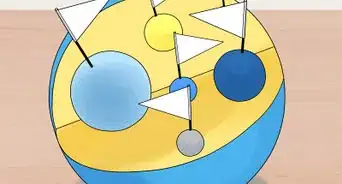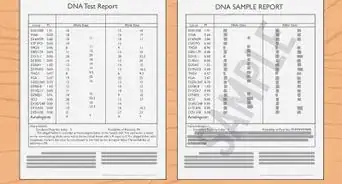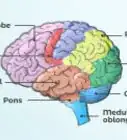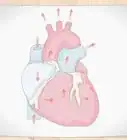This article was co-authored by Bess Ruff, MA. Bess Ruff is a Geography PhD student at Florida State University. She received her MA in Environmental Science and Management from the University of California, Santa Barbara in 2016. She has conducted survey work for marine spatial planning projects in the Caribbean and provided research support as a graduate fellow for the Sustainable Fisheries Group.
There are 9 references cited in this article, which can be found at the bottom of the page.
This article has been viewed 89,237 times.
Flowers aren’t just beautiful, they’re actually complex reproductive systems! You can dissect a flower to get an inside look and some hands-on experience. You’ll get to see how the flower uses both a male and female reproductive system to create its own ovules and fertilize itself. This allows the flower to reproduce on its own. Just remove the petals and anthers, slice the anthers and stigma with a scalpel, and peel the ovary with your fingers to dissect your own flower!
Things You Should Know
- The steps for dissecting the male and female reproductive systems in a flower are different.
- For the male reproductive system, you'll slice the stamen and anthers in half.
- For the female reproductive system, you'll slice the stigma and ovary in half.
Steps
Dissecting the Male Reproductive System
-
1Remove the flower from the plant. You can use scissors or your hands. Leave at least a little bit of the stem. You don’t want to accidentally cut off an important part of the flower base, like the ovary.[1]
- The ovary is located around the base of the flower petals, making it easy to tear off by accident. It’s part of the female reproductive system that holds the ovules.[2]
- If you bought a flower, this step is unnecessary because the flower is already removed from its host plant.
-
2Remove the sepals and petals from the flower. Sepals are the small, green leaf-like structures in between the petals and the stem. Use your hands to pull each one down towards the stem.[3]
- Be careful and go slowly so you don’t remove another part of the flower by accident.
- Pull off the sepals before the petals.
- The sepals protect the bud of the flower as it develops, especially from cold or injury.[4]
Advertisement -
3Remove the anthers and their stems. Anthers create pollen inside the stamen of the flower.[5] The anthers are the yellow, furry looking tips. Each one is attached to a thin stem. Either pull them off with your hands or slice them off with a scalpel.[6]
- If you use your hands, be sure not to pull too hard, or you can rip off too much of the flower.
-
4Slice the stamens and anther in half with a scalpel. The stamen is where the pollen is produced.[7] Be very gentle because the anther is very small and fragile. Inside, you’ll find pollen and pollen grains.[8]
- The pollen is what fertilizes the flower's ovules, which allows it to reproduce. Wind blows the pollen from a flower that's producing it to another flower, where it catches on the stigma and germinates. Next, it grows a pollen tube to reach the egg.[9]
Dissecting the Female Reproductive System
-
1Pin the flower to the dissection board. Place 1 pin in the tip of the stigma and the other at the top of the stem, which you’ll find at the bottom of the flower. The stigma is the mushroom-shaped dome at the top of the middle-most sticky stem.[10] This will help stabilize your flower while you dissect its ovary.
- If you don't have a dissection board or pins, you can use needles and a spare piece of wood or cutting board instead.[11]
-
2Slice the stigma down the middle with a scalpel. The stigma is part of the pistil, and it's where the pollen germinates so that it can fertilize the ovules.[12] Start at the tip of the stigma and move down through the end of the stem. Remove the pins when you reach them.[13]
- Try to slice as straight as possible. The tidier the cut, the easier it will be to inspect the plant.
- Don’t slice all the way through! Gently push down the scalpel as you slice to only cut through half of the layers.
-
3
-
4Slice the ovary open with the scalpel. Inside you’ll find tiny ovules with an embryo sack and sometimes seeds. If you’d like, you can scrape them out carefully with the scalpel.[16]
- The ovules are basically the "egg" of the flower. When the ovules are fertilized by pollen, they grow a plant embryo, which is contained in a seed until germination.
Community Q&A
-
QuestionI wanted to know about the skills involved in dissecting a flower. What is the difficulty in this flower dissection?
 Ashley BaoCommunity AnswerIt should not be too difficult, although you need to be careful because flowers can be delicate/fragile.
Ashley BaoCommunity AnswerIt should not be too difficult, although you need to be careful because flowers can be delicate/fragile. -
QuestionAfter dissecting the flower, I have to paste the parts on a paper. How can I do it?
 Community AnswerTry using tape which you attach to the flower dissection, while leaving enough room on the tape. That way, you can stick it to paper while still being able to see the different plant parts.
Community AnswerTry using tape which you attach to the flower dissection, while leaving enough room on the tape. That way, you can stick it to paper while still being able to see the different plant parts.
Warnings
- It’s really easy to cut or peel off too much of a flower part because everything is so small. Work slowly and carefully to try and make sure this doesn’t happen.⧼thumbs_response⧽
- Be careful when using the scalpel! Try to keep your fingers out of the way so you don’t cut yourself.⧼thumbs_response⧽
Things You’ll Need
- Scalpel
- Dissecting Board
- Pins
References
- ↑ https://www.science-sparks.com/dissecting-flowers-and-more-plant-experiments/
- ↑ https://www.amnh.org/learn/biodiversity_counts/ident_help/Parts_Plants/parts_of_flower.htm
- ↑ https://learning-center.homesciencetools.com/article/flower-dissection-science-project/
- ↑ https://kids.britannica.com/students/article/flower/274354/200872-toc
- ↑ https://www.amnh.org/learn/biodiversity_counts/ident_help/Parts_Plants/parts_of_flower.htm
- ↑ https://education.ufl.edu/riel/files/2022/06/RIEL-Biology-Flower-Dissection-Collaboration.pdf
- ↑ https://www.amnh.org/learn/biodiversity_counts/ident_help/Parts_Plants/parts_of_flower.htm
- ↑ https://www.amnh.org/learn/biodiversity_counts/ident_help/Parts_Plants/parts_of_flower.htm
- ↑ http://www-plb.ucdavis.edu/labs/rost/Rice/reproduction/flower/fertiliz.html
- ↑ https://www.amnh.org/learn/biodiversity_counts/ident_help/Parts_Plants/parts_of_flower.htm
- ↑ https://learning-center.homesciencetools.com/article/flower-dissection-science-project/
- ↑ https://www.amnh.org/learn/biodiversity_counts/ident_help/Parts_Plants/parts_of_flower.htm
- ↑ https://learning-center.homesciencetools.com/article/flower-dissection-science-project/
- ↑ https://www.youtube.com/watch?v=yLl7iEpqxZA&frags=pl%2Cwn
- ↑ https://www.amnh.org/learn/biodiversity_counts/ident_help/Parts_Plants/parts_of_flower.htm
- ↑ https://www.bbowt.org.uk/blog/charlotte-evetts/family-activity-how-dissect-flower-and-understand-whats-inside
